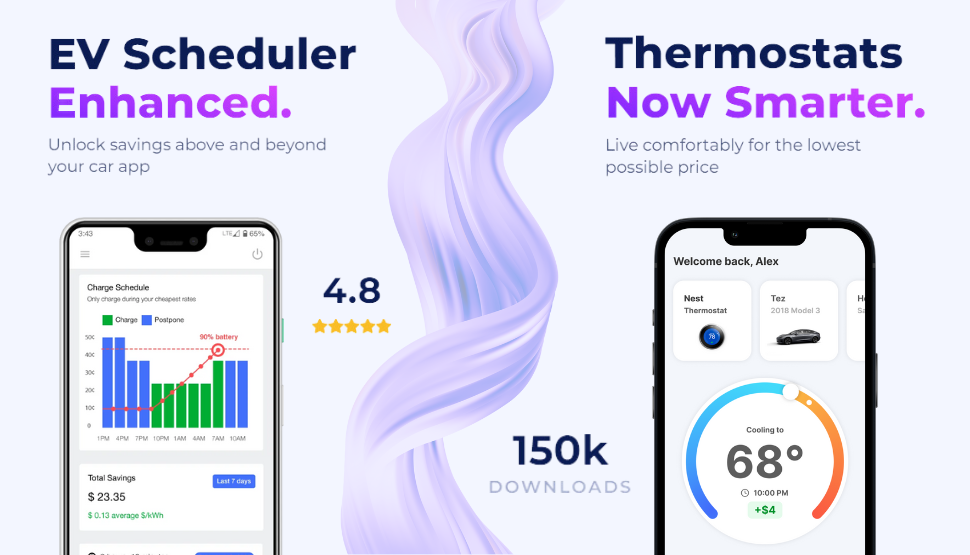I'm looking for suggestions for a good power relay to buy to help limit when our cars can charge.
Basically I'm looking for at least a 240V / 60A relay that can be switched with low voltage, like 12V. It will hook between our 50A electric service panel breaker and our NEMA 14-50 220V car charger outlet, and be controlled by a ELK M1 home automation & security controller which can tell it when to turn on and off.
Here is one option, if a little pricy: https://www.mouser.com/ProductDetail/Carlo-Gavazzi/RGC1A60D60KGU?qs=xZ/P%2Ba9zWqZa21w2CLj5Xg==
Reason: Our power time-of-usage tripples our electric cost after 4:00 PM, so I want to program my house computer to disable the car after 4pm, and then re-enable it again when the sun is up.
I imagane that I only need to switch one leg on and off, but switching both legs would probably be better. Probably an electronic (triac) switch is better than a mechanical one, but there are magnetic latching switches also available, like this one: IM601 32A 40A 60A 5V 6V Magnetic Latching EV EVSE Relay for Electric Vehicle Charger
Anyone have any experience in hooking up such a relay, and have any suggestions as to which is the best way to go?
(The best would be if the Tesla cars would be smart enough to allow us to input our electric time of use rates and have the car limit themselves depending on user preferences, but we're not there yet, ... hello Elon, are you listening.)
Basically I'm looking for at least a 240V / 60A relay that can be switched with low voltage, like 12V. It will hook between our 50A electric service panel breaker and our NEMA 14-50 220V car charger outlet, and be controlled by a ELK M1 home automation & security controller which can tell it when to turn on and off.
Here is one option, if a little pricy: https://www.mouser.com/ProductDetail/Carlo-Gavazzi/RGC1A60D60KGU?qs=xZ/P%2Ba9zWqZa21w2CLj5Xg==
Reason: Our power time-of-usage tripples our electric cost after 4:00 PM, so I want to program my house computer to disable the car after 4pm, and then re-enable it again when the sun is up.
I imagane that I only need to switch one leg on and off, but switching both legs would probably be better. Probably an electronic (triac) switch is better than a mechanical one, but there are magnetic latching switches also available, like this one: IM601 32A 40A 60A 5V 6V Magnetic Latching EV EVSE Relay for Electric Vehicle Charger
Anyone have any experience in hooking up such a relay, and have any suggestions as to which is the best way to go?
(The best would be if the Tesla cars would be smart enough to allow us to input our electric time of use rates and have the car limit themselves depending on user preferences, but we're not there yet, ... hello Elon, are you listening.)




